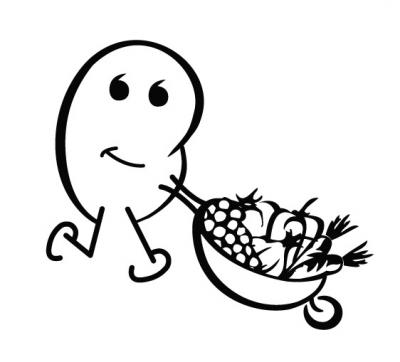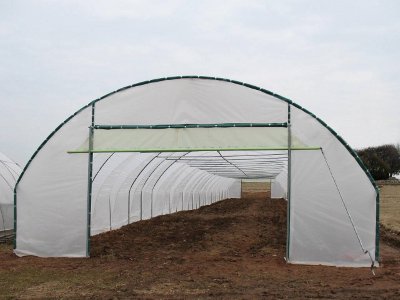 Rob M.
Rob M. | Local Growers Experiment With and Expand Greenhouse Operations
Apr 10, 2012 at 2:05 pm |
Available again this week, we have Cayenne Short, greenhouse-grown cucumbers from Robbie and Janie Cox. Robbie and Janie have been experimenting with greenhouse for a few years now, and have had great success with cucumbers thus far. Initially, they focused their greenhouse operations on tomato production, but found mixed results in their efforts. Tomatoes are a little more complicated because they require a bee population to assist in pollination. Without bees, few of the tomato plants would pollinate, and withouth pollination they don't bear fruit. However, Robbie and Janie found that their greenhouse wasn't quite large enough to support the bees. There simply wasn't enough space to support the hive, so the bees focused their attention elsewhere. This meant they had to switch over to manual pollination, which seemed to be more trouble than it was worth, and not nearly as effective. For this reason, Robbie decided to switch over to cucumbers, which are self-pollinating, and has seen great success.
In fact, Robbie's success with cucumber greenhouses has encouraged him to dive back into greenhouse tomato production, and is also experimenting with other crops that otherwise would be unavailalbe this time of year, such as red, orange, and yellow bell peppers. To accomplish this, he has developed a series of hoop houses. Hoop houses are relatively inexpensive greenhouses, formed by laying a layer of clear plastic over a flexible tube or pipe construction. They are inexpensive when compared to sturdier, more robust, more traditional greenhouse constructions, and they are quick and easy to build or deconstruct as needed. We have seen more and more farmers utlizing hoop houses, or expanding their existing hoop house operations in recent years. Many growers just use hoop houses to prepare seedlings, getting a few week headstart on the season. Others, like Robbie, are using them for full production on early season crops like cucumbers, tomatoes, and now bell peppers. Robbie says he has been able to open up his tomato hoop houses now, and has solved his pollination problem. He says he has seen significant blooms already, and is now expecting a crop much larger than initial estimates. Colored bell peppers will follow tomatoes, and Robbie thinks he will have them weeks before they normally come available in the fields (late June to July at the earliest).
It's great to see so many local growers experiment with new techniques, and expand their operations further into the "off-seasons". Demand for quality, local products certainly seems to stay on the rise, and local growers are responding in fashion. |   (Rob M.) (Rob M.) |